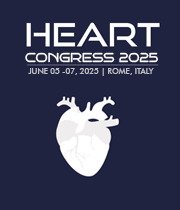Title : Arrhythmia following congenital heart disease surgery in Oman: Incidence and risk factors - A prospective study
Abstract:
Background: Arrhythmia is a common complication after congenital heart disease (CHD) surgeries, with varying incidence rates. It places a significant burden on healthcare systems, particularly intensive care units. In Oman, the incidence and characteristics of post-surgical arrhythmias in pediatric patients undergoing CHD repair have not been thoroughly documented. This study aims to fill this gap.
Objectives: The study's objectives are to determine the incidence, types, and outcomes of arrhythmias in patients undergoing CHD surgery in Oman over one year. It also seeks to identify risk factors for the development of arrhythmias in the early postoperative period at the National Heart Centre in Oman.
Methods: This prospective cohort study was conducted at the National Heart Centre in Oman, involving pediatric patients post CHD repair from 2023 to 2024. Out of the 360 patients operated on within the specified timeframe, 346 met the inclusion criteria for this study. Patients excluded were those who have underlying arrhythmia or who have a pacemaker. Data, including patient demographics and preoperative, perioperative, and postoperative parameters, were collected for each patient from the hospital information system. Univariate and multivariate logistic regression analyses were performed to identify risk factors for the development of postoperative arrhythmia.
Results: Among the 346 patients, 49 (14.2% with a 95% CI of 10.6% - 18.3%) developed arrhythmias postoperatively. Junctional ectopic tachycardia (JET) was the most common, observed in 28 cases (57%), followed by atrioventricular block in 10 cases (20%), and supraventricular tachycardia (SVT) in 9 cases (18%). Among the patients with atrioventricular block, 5 (10%) required permanent pacemaker implantation for persistent complete heart block. Analysis revealed that patients with arrhythmias experienced longer bypass times (p = 0.005) and cross-clamp times (p = 0.040) and were predominantly infants (p = 0.041).
Conclusion: Early postoperative arrhythmia was identified in 14.2% of our population, with JET being the most common, occurring in 57% of patients with arrhythmia. Prolonged bypass time, cross-clamp time, younger age, and lower weight were potential risk factors for the development of arrhythmia.



